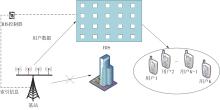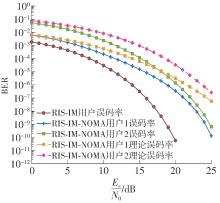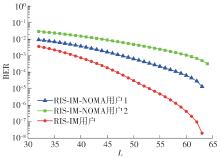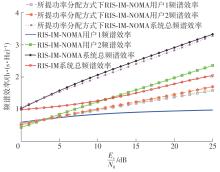| 1 |
MAHMOUD H H H, AMER A A, ISMAIL T .6G:a comprehensive survey on technologies,applications,challenges,and research problems[J].Transactions on Emerging Telecommunications Technologies,2021,32(4):e4233/1-14.
|
| 2 |
STRINATI E C, ALEXANDROPOULOS G C, WYMEERSCH H,et al .Reconfigurable,intelligent,and sustainable wireless environments for 6G smart connectivity[J].IEEE Communications Magazine,2021,59(10):99-105.
|
| 3 |
BHOWAL A, AÏSSA S, KSHETRIMAYUM R S .RIS-assisted advanced spatial modulation techniques for ambient backscattering communications[J].IEEE Transactions on Green Communications and Networking,2021,5(4):1684-1696.
|
| 4 |
张广驰,乐文英,庞海舰,等 .IRS辅助认知无线携能通信网络的发射功率最小化算法[J].华南理工大学学报(自然科学版),2023,51(3):110-123.
|
|
ZHANG Guangchi, LE Wenying, PANG Haijian,et al .Transmit power minimization algorithms for IRS-assisted cognitive simultaneous wireless information and power transfer networks[J].Journal of South China University of Technology (Natural Science Edition),2023,51(3):110-123.
|
| 5 |
BASAR E .Index modulation techniques for 5G wireless networks[J].IEEE Communications Magazine,2016,54(7):168-175.
|
| 6 |
MAO T, WANG Q, WANG Z,et al .Novel index modulation techniques:a survey[J].IEEE Communications Surveys & Tutorials,2018,21(1):315-348.
|
| 7 |
DI RENZO M .Spatial modulation based on reconfigurable antennas:a new air interface for the IoT[C]∥ Proceedings of 2017 IEEE Military Communications Conference.Baltimore:IEEE,2017:495-500.
|
| 8 |
PHAN-HUY D T, KOKAR Y, RACHEDI K,et al .Single-carrier spatial modulation for the internet of things:design and performance evaluation by using real compact and reconfigurable antennas[J].IEEE Access,2019,7:18978-18993.
|
| 9 |
NGUYEN VIET D, DI RENZO M, BASAVARAJAPPA V,et al .Spatial modulation based on reconfigurable antennas:performance evaluation by using the prototype of a reconfigurable antenna[J].EURASIP Journal on Wireless Communications and Networking,2019,2019:149/1-17.
|
| 10 |
BASAR E, DI RENZO M, DEROSNY J,et al .Wireless communications through reconfigurable intelligent surfaces[J].IEEE Access,2019,7:116753-116773.
|
| 11 |
BASAR E .Reconfigurable intelligent surface-based index modulation:a new beyond MIMO paradigm for 6G[J].IEEE Transactions on Communications,2020,68(5):3187-3196.
|
| 12 |
MA T, XIAO Y, LEI X,et al .Large intelligent surface assisted wireless communications with spatial modulation and antenna selection[J].IEEE Journal on Selected Areas in Communications,2020,38(11):2562-2574.
|
| 13 |
CANBILEN A E .Performance analysis of RIS-assisted SM with I/Q imbalance[J].Physical Communication,2021,49:101473/1-11.
|
| 14 |
SALAN O, BAYAR F, ILHAN H .Performance evaluation of RIS-based SSK and SM schemes with perfect and imperfect channel phase estimation over Weibull fading channels[J].AEU-International Journal of Electronics and Communications,2021,136:153713/1-10.
|
| 15 |
景小荣,马玉丹,万宇,等 .基于索引调制的RIS辅助SIMO通信系统信号检测算法[J].电子与信息学报,2022,44(7):2382-2391.
|
|
JING Xiaorong, MA Yudan, WAN Yu,et al .Signal detection algorithm of RIS-assisted SIMO communication system with index modulation[J].Journal of Electronics & Information Technology,2022,44(7):2382-2391.
|
| 16 |
ALMOHAMAD A, HASNA M O, ALTHUNIBAT S,et al .A novel downlink IM-NOMA scheme[J].IEEE Open Journal of the Communications Society,2021,2:235-244.
|
| 17 |
张诚,王鸿 .智能反射面辅助的非正交多址系统高能效传输方案研究[J].重庆邮电大学学报(自然科学版),2023,35(1):16-22.
|
|
ZHANG Cheng, WANG Hong .Research on energy-efficient transmission scheme for IRS-assisted NOMA systems[J].Journal of Chongqing University of Posts and Telecommunications(Natural Science Edition),2023,35(1):16-22.
|







